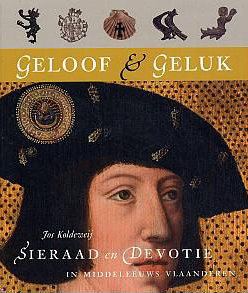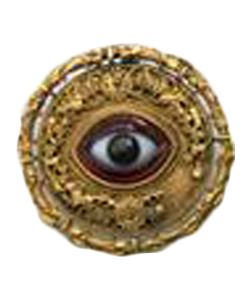An extraordinary exhibition in Bruges -
Bruggemuseum-Gruuthuse
September 2006 to February 2007Geloof en Geluk. 'de middeleeuwse pin: laat u (n)iets op de mouw spelden'
‘Belief and Happiness: the medieval pin, something up your sleeve’ - Literally this translates as ‘allow nothing / anything to be pinned on your sleeve, a Dutch saying meaning ‘do not let anyone fool you’
In the Middle Ages pins to wear on clothing were very important. Priests, knights, merchants… everyone from emperor to beggar pinned badges on their garments. These ancient badges indicated just who the wearer was, were amulets for protection, and touched the heart of the medieval person’s belief and happiness. The most fervent collectors of these symbolic pieces were pilgrims, going, as it were, from badge to badge. This exhibition brought together many of these small items – all found or made in Flanders – and placed them in what can be called a dialogue with unique paintings, miniatures, utensils, and statues of saints, giving an exciting and fascinating view of the everyday life of late medieval times. Laat je (n)iets op de mouw spelden: - don’t be fooled, the Middle Ages were not as pious as would appear from some of the art works of the times, and without a trace of shame or embarrassment displayed badges that could easily bring a blush to the cheek. The imposing mansion that houses Bruggemuseum-Gruuthuse museum provided the ideal background for this stimulating exhibition that spoke to the pilgrim in all of us.
Text from the press release, 21st September 2006 - Bruggemuseum Gruuthuse


